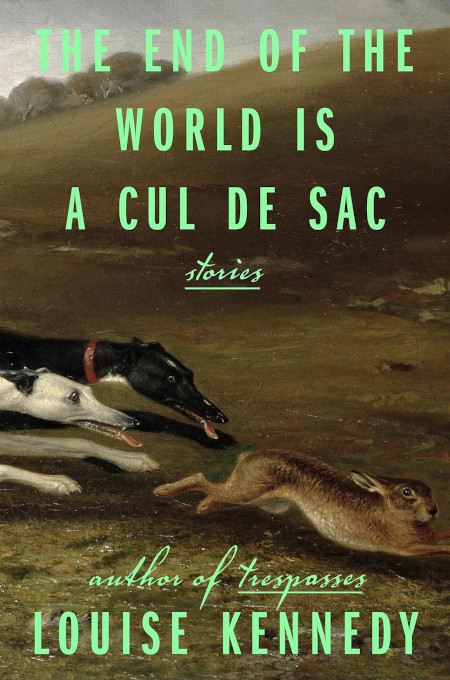Irish Life is Bleak and Treacherous in ‘The End of The World is a Cul de Sac’

The End of the World is a Cul De Sac: Stories by Louise Kennedy
Riverhead Books
289 pages
The men and women who inhabit Louise Kennedy’s new story collection, The End of the World is a Cul de Sac, lead lives of not-so-quiet desolation. In these stories, the women are often pregnant, worried about the state of their existence, and/or perplexed as to what to say or do about their life partners. The men—almost uniformly Irish rural alpha-male types—engage in drug running, political turmoil, and other black arts.
In other words, not a happy lot.

Nonetheless, Kennedy (author of an acclaimed novel, Trespasses) writes beautifully about the Irish and their tumultuous inner lives. In the story, “Hunter-Gatherers,” Siobhán’s fascination with a hare in her backyard turns sour when her lover Sid abruptly puts an end to the wild creature’s life. “In Silhouette” traces a line from the present-day Irish countryside to the Troubles of the 1980s, when violence terrorized the local citizenry.
In “Imbolc,” Elaine (holding her infant daughter Grace) visits the shed where her mate Liam cultivates a marijuana crop with assistance from a comely young woman, Stacey Rainey:
“[Elaine] put Grace on her other hip. As she passed the big pen, a ewe moaned, a dreadful sound. She called out to Liam to tell him the animal seemed ready, but his back was to her. He was standing with his legs wide apart, talking down to Stacey Rainey, who was crouching on the floor, bottle-feeding a lamb through the bars of one of the pens. Her haunches in the leggings were full and shiny. That one’s a tramp, she whispered to Grace as they went through the door to the yard.”
Elaine’s suspicions about the young woman are confirmed late in the story, leaving her unmoored about the future.

The title story, among the strongest in the collection, opens with a lovely description of decay: “The dereliction was almost beautiful, the houses dark against the mauve dawn, pools of buff-colored water glinting briefly as a passing car took the last bend before town.”
Sarah, the abandoned wife of an insolvent real estate developer, is surprised to learn that in the local community she’s known as “the gangster’s moll from down the hill.” Sarah walks through the deserted construction site in a state of confusion and bewilderment. A man named Ryan interrupts her reverie inside the empty model home, an encounter that leads to lovemaking of an uncertain quality, and the ambiguous question of a new start in life:
“Downstairs, she pulled the patio door open. She lowered herself into the metal chair letting the dew seep into her robe. Lines had begun to crackle across the yellow plaster of the houses; the roadway appeared sunken, even where there was pavement, the gardens too. Another day was breaking over Hawthorn Close.”

In these slice-of-life stories, the female protagonists frequently find themselves overmatched by the threat of male violence, landing them in a state of near-paralyzing despair. But throughout the book, Kennedy moves adroitly between past and present, teasing readers with just enough backstory to keep the narratives humming along.
The End of the World is a Cul de Sac embodies much of what’s best in the Gaelic story-telling tradition. It marks the emergence of yet another gifted and fearless chronicler of Irish lives.
Author Bio:
Lee Polevoi, Highbrow Magazine’s chief book critic, is the author of a new novel, The Confessions of Gabriel Ash.
For Highbrow Magazine
Photo Credits: Depositphotos.com; Goodfreephotos (Creative Commons)































































































































































































































































































































